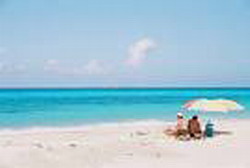The Cuban archipelago: History, Tourism and Traditions
- Submitted by: admin
- Travel and Tourism
- Arts and Culture
- Caribbean
- culture an traditions
- Destinations
- national
- Society
- 07 / 14 / 2008

Discovered in 1492, Cuba has gathered and protected its 500-year history, including archeological sites that show the lives and customs of the aborigines who inhabited the island before the arrival of the Spanish conquistadors.
One of Cuba's major tourist destinations is Havana, whose fortification system, includes nine large fortresses, which – according to experts – make up the most outstanding defense complex in the Spanish-speaking Americas.
In Havana's historic heart, declared Humankind's Heritage by the United Nations Educational, Scientific and Cultural Organization (UNESCO), nearly 140 buildings were constructed in the 16th and 17th centuries, another 200 were built in the 18th century, and more than 460 in the 19th century.
The second major historic center in Cuba is Camagüey, formerly known Santa María del Puerto del Príncipe and often called the city of "tinajones" (large earthenware jars), due to those peculiar containers, which were used to collect rainwater for human consumption centuries ago and decorate parks and gardens at present.
Also in eastern Cuba is Granma province, which holds 48 percent of all historic sites on the island, including its main city, Bayamo, which was declared a National Monument and was the capital of the Republic in Arms at the beginning of the 1868 independence war.
In central Cuba, the greatest historic attractions are in Sancti Spiritus, the only province in the country that holds two of the first seven villages founded by Governor Diego Velázquez in the 16th century: Villa del Espíritu Santo (Holy Spirit) and Villa de la Santísima Trinidad (Holy Trinity).
In the eastern part of the country, Santiago de Cuba treasures a historic wealth that is more than 480 years old, including the largest and most complete example of European renaissance military engineering in the Caribbean region, made up of the Castles of San Pedro de La Roca and La Estrella, and La Socapa Battery.
Cuba has a large infrastructure of nearly 290 museums, including 14 on art, seven on science and technology, five on ethnography and anthropology and 68 on history.
One of the colossuses in Cuba's cultural infrastructure is the National Museum of Fine Arts, created in 1913 and whose current venue was built in 1954 as the Palace of Fine Arts.
That building replaced the old Colón Market, benefiting from a comprehensive restoration project carried out recently, when the museum was distributed in three buildings, two of which hold the exhibitions.
The museum's patrimony consists of 47,600 artworks, including 45,000 that were designated national heritage and more than 2,000 that are kept in deposit.
(DTCuba)
Comments